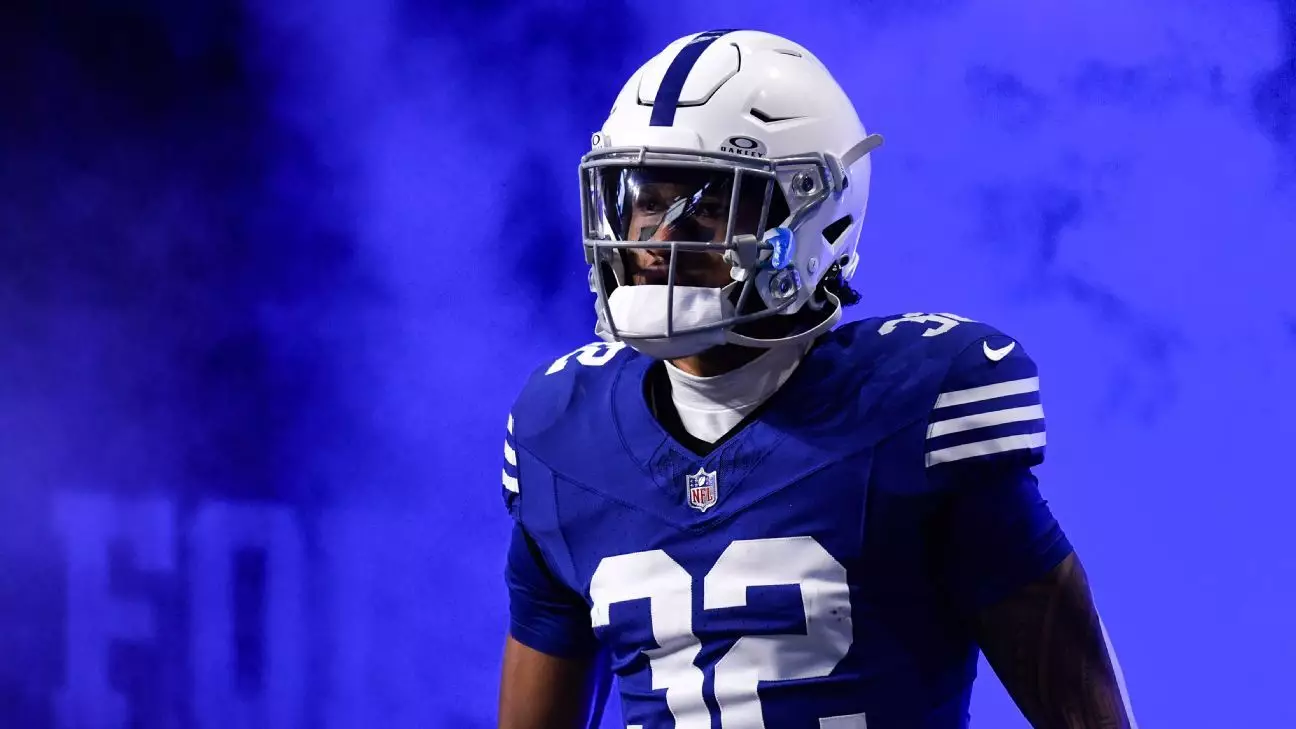The New Orleans Saints find themselves at a critical crossroads in their defensive rebuilding efforts, emphasizing agility and versatility over traditional static roles. The recent pursuit of free agent safety Julian Blackmon exemplifies this shift. Rather than merely filling a void left by Tyrann Mathieu’s retirement, the Saints are pursuing a player whose career has been marked by resilience and adaptability. This move signals a clear intent to cultivate a secondary that can withstand the rigors of a fiercely competitive NFL season, even if it means betting on potential rather than proven consistency. The team’s offseason acquisitions, highlighted by the signing of Justin Reid, suggest a deliberate attempt to reshape their defensive core into a more flexible and dynamic unit under coach Brandon Staley’s new defensive approach.
Blackmon’s Journey: Resilience Amidsetbacks
Julian Blackmon’s career trajectory offers a compelling narrative about perseverance and untapped potential. Coming into the league with promise, his initial versatility—flipping between cornerback and safety—highlighted his football IQ and athletic ceiling. However, injuries, particularly the torn labrum in 2023, momentarily curtailed his ascent. Despite setbacks, Blackmon’s perseverance shines through, having played all 16 games this past season, posting career-high numbers in tackles and interceptions. His performance disrupted the Colts’ secondary in a season adversely affected by injuries and inconsistency. Blackmon’s resilience signals to the Saints that they are investing in someone who not only possesses raw talent but also the mental toughness required to rebound from adversity. His journey underscores a broader NFL reality: talent alone isn’t enough; resilience and a willingness to adapt are what separate good players from game-changers.
Addressing the Safety Vacuum and Future Outlook
With the departure of Tyrann Mathieu, the Saints face a formidable challenge in stabilizing their secondary. Experience is scarce; J.T. Gray’s role has traditionally been special teams, and the rest of the safety room comprises players with limited starting experience or coming off injuries. The signing of Ugo Amadi and Terrell Burgess provides incremental depth, but it isn’t enough to instill confidence in a pivotally important position. The team’s strategy revolves around developing younger players like Jordan Howden and evaluating the potential of Blackmon, should the deal be finalized. Coach Kellen Moore’s comments about the need for flexibility serve as a philosophical acknowledgment: the Saints are committed to adjusting their roster as needed, cultivating a secondary that can evolve throughout the season.
Cap Space and Market Realities
Before Mathieu’s exit, the Saints had a healthy $23.8 million in cap space, providing ample room for strategic signings and roster upgrades. Blackmon’s free agency journey—marked by disappointment in the market and injury setbacks—reflects broader NFL market intricacies where injuries and team needs sharply influence player value. His return to the Colts on a modest one-year deal underscored that teams often undervalue players recovering from injuries or those with perceived inconsistent performance. The Saints, therefore, see an opportunity in Blackmon—a talented player whose ceiling remains high—especially at a lower cost. This demonstrates a bold, opportunistic approach to roster building, where the team bets on potential long-term gains rather than short-term fixes.
The Broader Implications: A Reimagined Defense
The Saints’ pursuit of Blackmon epitomizes a broader philosophy: reinvention through calculated risk. Losing stalwarts like Lattimore and Adebo has left gaps that can’t be filled overnight, but it opens avenues for younger talent and versatile newcomers to emerge. The defense under Brandon Staley is expected to leverage this fluidity, adapting schematically to maximize their personnel’s strengths. This approach challenges the traditional NFL mindset of relying on star-power alone; instead, it emphasizes collective resilience, scheme flexibility, and player development. If Blackmon returns to his pre-injury form, the Saints could produce a secondary that defies expectations, offering both stability and spark—an essential recipe for playoff contention.
The Saints’ offseason reflects a nuanced understanding of the game’s evolving landscape, where rebuilding isn’t just about acquiring star players but about cultivating adaptability and resilience. Their willingness to gamble on Blackmon’s untapped potential is an audacious testament to their ambition—an acknowledgment that in today’s NFL, the path to greatness often winds through calculated risks and relentless development.

